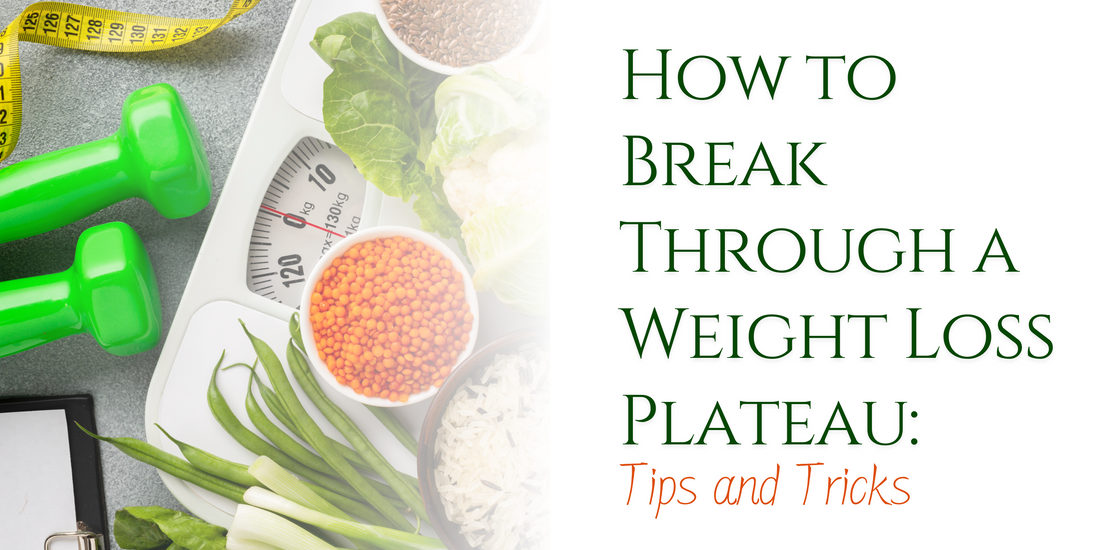
How to Break Through a Weight Loss Plateau: Tips and Tricks
Million's SmileShare
Introduction
Hitting a weight loss plateau can be incredibly frustrating. You’re doing everything right — eating healthy, exercising regularly, and staying consistent with your routine — but the scale just won’t budge. If you’ve been stuck at the same weight for weeks or even months, you’re not alone. Weight loss plateaus are a common part of the journey, but they don’t have to be a dead end. In this blog, we’ll explore why plateaus happen and provide you with practical tips and tricks to break through and start losing weight again.
1. Why Do Weight Loss Plateaus Happen?
Before diving into the solutions, it's essential to understand why plateaus occur in the first place. Here are a few common reasons:
- Metabolic Adaptation: As you lose weight, your body’s metabolism slows down to conserve energy. This is a natural survival mechanism that makes it harder to continue losing weight at the same rate.
- Reduced Caloric Needs: The lighter you become, the fewer calories your body needs to function. This means that the same calorie intake that initially led to weight loss may now be just enough to maintain your new weight.
- Loss of Muscle Mass: Weight loss, especially rapid weight loss, can sometimes lead to a loss of muscle mass, which reduces your overall metabolic rate since muscle burns more calories than fat.
- Diet Fatigue: Following the same diet for an extended period can lead to boredom and unintentional changes in eating habits, like eating slightly larger portions or adding extra snacks.
Understanding these factors can help you approach a weight loss plateau with patience and the right mindset. Now, let’s explore actionable steps to break through it.
2. Tips and Tricks to Break Through a Weight Loss Plateau
1. Reassess Your Caloric Intake
When you lose weight, your body requires fewer calories to maintain its new weight. It’s important to reassess your daily caloric intake and adjust it accordingly. Use a reliable online calorie calculator to determine your new calorie needs based on your current weight, age, gender, and activity level.
- Tip: Track your food intake using a food diary or a mobile app to ensure you’re consuming the right amount of calories. It’s easy to underestimate portion sizes or forget about small snacks that add up.
2. Revamp Your Workout Routine
If you’ve been doing the same exercises for weeks or months, your body may have adapted to them, making them less effective for weight loss. Revamping your workout routine can help shock your body and jumpstart your metabolism.
- Try New Activities: Incorporate new forms of exercise, such as HIIT (High-Intensity Interval Training), strength training, yoga, or swimming, to challenge different muscle groups and keep your body guessing.
- Increase Intensity: Gradually increase the intensity, duration, or frequency of your workouts to burn more calories and build more muscle.
3. Focus on Strength Training
While cardio is great for burning calories, strength training is crucial for building muscle, which in turn boosts metabolism. More muscle mass means more calories burned, even at rest.
- Tip: Include compound exercises like squats, deadlifts, lunges, and push-ups that work multiple muscle groups simultaneously. Aim for at least two to three strength-training sessions per week.
4. Prioritize Protein Intake
Protein is essential for preserving muscle mass during weight loss. It also helps keep you feeling full for longer, reducing the likelihood of overeating.
- Tip: Make sure you’re getting enough protein in your diet, with each meal containing a source of lean protein such as chicken, fish, tofu, beans, or low-fat dairy. Aim for about 1.2 to 1.6 grams of protein per kilogram of body weight.
5. Manage Stress and Sleep
Stress and lack of sleep can significantly impact weight loss by increasing levels of cortisol, a hormone that promotes fat storage, particularly around the abdominal area.
- Tip: Incorporate stress-management techniques like meditation, deep breathing, or yoga into your daily routine. Aim for 7-9 hours of quality sleep per night to support overall health and weight management.
6. Stay Hydrated
Sometimes, what we perceive as hunger is actually thirst. Staying hydrated helps control appetite and supports overall metabolic function.
- Tip: Aim to drink at least 8-10 glasses of water a day. If you find plain water boring, try infusing it with fruits like lemon, cucumber, or berries for added flavor.
7. Try Intermittent Fasting
Intermittent fasting can be an effective way to break through a weight loss plateau by limiting the window of time in which you consume calories. This method can help reduce overall calorie intake without requiring drastic changes to your diet.
- Tip: Start with a simple fasting schedule, like the 16:8 method, where you fast for 16 hours and eat within an 8-hour window. Make sure to eat balanced meals during your eating period to avoid nutrient deficiencies.
8. Check for Hidden Calories
It’s easy to overlook hidden calories in condiments, dressings, sauces, and beverages. These small additions can quickly add up and stall your progress.
- Tip: Be mindful of everything you consume, and consider swapping high-calorie condiments for lower-calorie alternatives. Use herbs, spices, and lemon juice to add flavor without extra calories.
9. Keep a Food Journal
Keeping a food journal can help you identify patterns or habits that may be hindering your weight loss progress. It allows you to track what you eat, how much you eat, and when you eat, providing valuable insights.
- Tip: Note down not only what you eat but also how you feel before and after eating. This can help you identify emotional eating triggers and adjust your habits accordingly.
10. Consider Professional Guidance
If you’ve tried multiple strategies and still find yourself stuck, consider seeking professional guidance from a nutritionist, dietitian, or personal trainer. They can provide personalized advice based on your specific needs and challenges.
3. Stay Patient and Persistent
Breaking through a weight loss plateau can be challenging, but it’s important to stay patient and persistent. Remember that plateaus are a normal part of the weight loss journey and don’t mean that your efforts have failed. By reassessing your approach, making small but meaningful changes, and focusing on sustainable habits, you can overcome the plateau and continue moving toward your weight loss goals.
Conclusion
Hitting a weight loss plateau is common, but it doesn’t have to derail your progress. By understanding why plateaus happen and implementing these tips and tricks, you can break through and continue on your journey to better health. Stay motivated, stay consistent, and remember that every step you take brings you closer to your goals.
